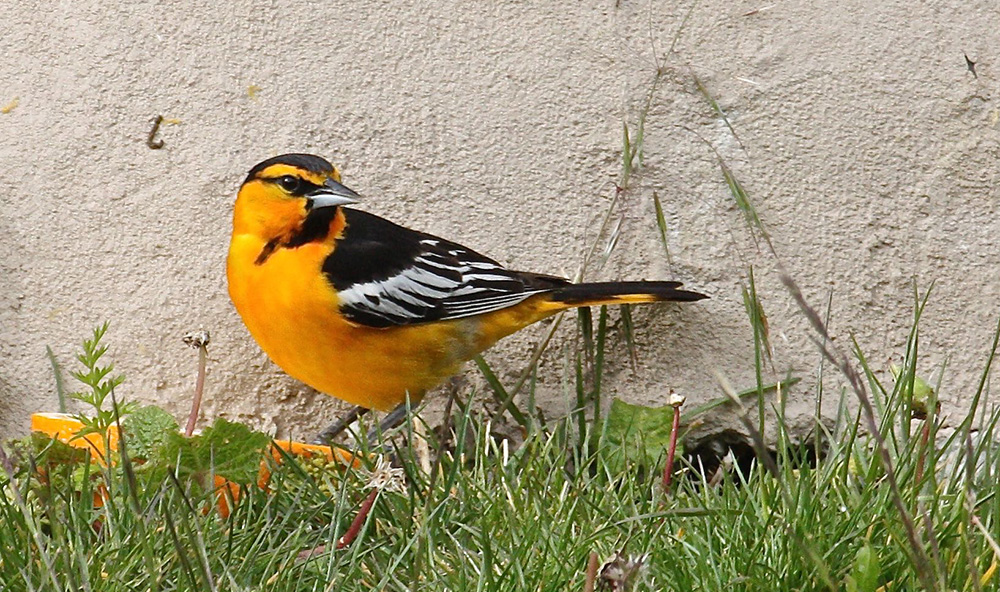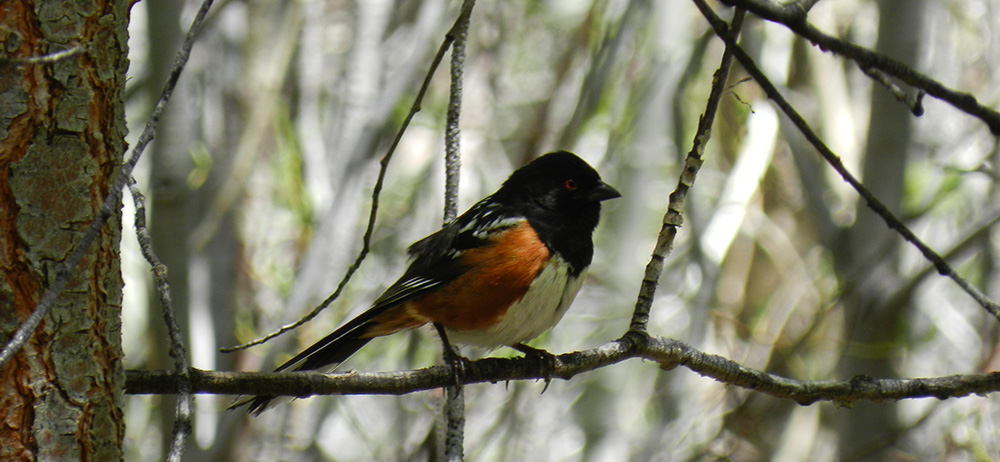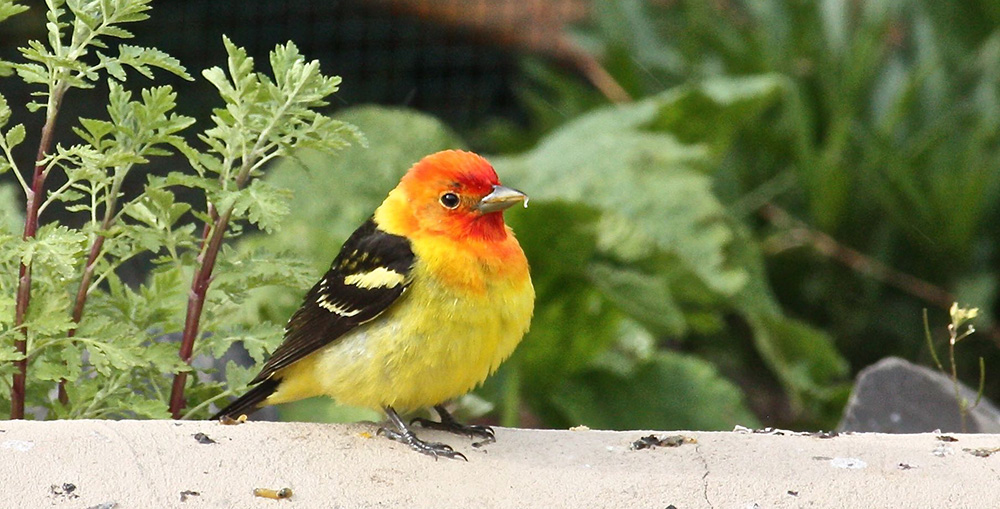
This post was written by Sandra Noll, Birding Intern in 2014, 2015, & 2016.

The season’s County Park bird walks officially began on May 17 with a record 46 species! As usual, the spring walks have been highlighted by bird species in migration from southern wintering grounds to northern nesting sites. It’s an exciting time of year because you never know what you might see. This year the variety and number of species has been higher than usual due to storms and snow in the high country pushing more birds down into the Mono Basin.
A few of the species seen on the first two walks include: Bullock’s Oriole, Lewis’ Woodpecker, Black-headed Grosbeak, Spotted Towhee, Western Tanager, courting California Gulls, and an unusually high number of warblers and flycatchers.


Co-sponsored by California State Parks (led by Ranger Dave Marquart) and the Mono Lake Committee (led by Birding Interns Erv Nichols and Sandra Noll) the free bird walks are offered every Friday and Sunday morning from 8:00–10:00am. Participants meet in the parking lot of County Park and walk through a variety of nearby habitats including: riparian forest, meadow, dry chaparral, and lakefront.
Note: If you’re arriving to County Park from the south, give yourself an extra 15–20 minutes of driving time for possible delays at the Caltrans Rockfall Project site between Lee Vining and County Park.
Whether a beginning or a seasoned birder you’ll find much to enjoy. We hope you will join us!

We are seeing some of the same species here in Jackson, which is on the west slope of the Sierra. We have the orioles and black-head grosbeaks nesting on our property. We have observed several species of towhee as well. Wish I was in the basin with you folks.
Wondering if you were out on the day you posted, 5/29. Just north, above much of Conway Ranch and spanning to Lundy, sky was full of seagulls several hundred feet up, swarming – never saw anything like it. What was that?
Hi Tad, here’s what we heard from Kristie Nelson, the California Gull researcher who lives here in the Mono Basin:
“I saw the swarming gulls that day as well. Though they often catch thermals—bubbles of warm air—to get a lift, that group seemed concentrated along Mill creek, and were NOT doing the typical thermal-riding—I think they were after some kind of aerial insect. Maybe there was a big hatch of something (caddis/stoneflies perhaps). When cicadas explode, you see big swarms of gulls foraging actually on the sagebrush bushes, but this was different, more like an aerial insect. Although I didn’t observe the very often the actual ‘fly-catching’ motion you can often see with that (reaching out and gulping at bugs in the air), I do think they were foraging on insects that day along Mill Creek.”
How cool that you saw the swarm of gulls!